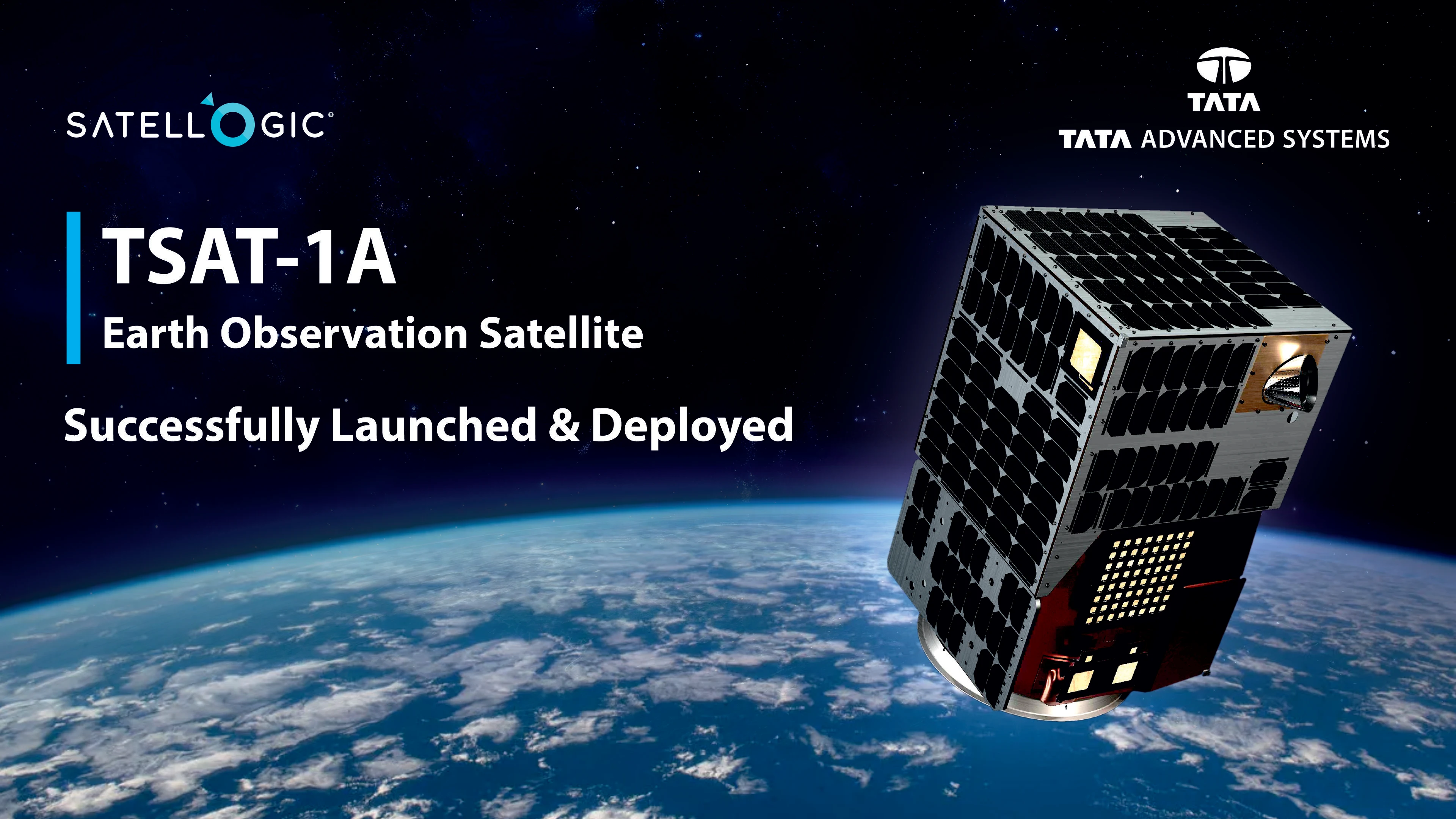
TSAT-1A is designed to provide high-resolution optical satellite images and features multispectral and hyperspectral capabilities, which will enhance image collection capacity, dynamic range, and low-latency delivery. This successful launch is a result of the collaboration between TASL and Satellogic, leveraging their combined expertise in satellite development and system integration.
This is a first step. TASL’s TSAT-1A has been successfully launched and deployed.@satellogic https://t.co/tTP1aajh8u
— Tata Advanced Systems (Tata Aerospace & Defence) (@tataadvanced) April 8, 2024
TSAT-1A has been assembled in TASL’s Assembly, Integration and Testing (“AIT”) plant at its Vemagal facility in Karnataka. This achievement follows the collaboration signed between TASL and Satellogic in November 2023, leveraging Satellogic’s expertise to develop and integrate an advanced EO satellite in India and TASL’s capability to undertake complex system integration.
Indianweb2.com first reported about TASL building this military grade spy satellite, in February this year.
TASL is a strategic entity of the Tata Group in the aerospace and defense industry. It was founded in 2007 and is located in Hyderabad, Telangana.
TSAT-1A will deliver high-resolution optical satellite images with increased collection capacity, dynamic range, and low-latency delivery through its multispectral and hyperspectral capabilities.
South-America's Uruguay-based Satellogic provided industry knowledge transfer, foundational components, IP licensing terms, and support in constructing an AIT facility in India – features of its Space Systems offering for direct satellite sales.
TSAT-1A stands out among Earth observation satellites due to its sub-meter resolution imaging capabilities, which allow for extremely detailed images of the Earth's surface. This precision is particularly beneficial for applications requiring high-resolution data, such as urban planning and environmental monitoring.
Compared to other satellites, TSAT-1A's multispectral and hyperspectral imaging technologies provide a broader range of data collection possibilities. These capabilities enable the satellite to capture images across multiple bands of the electromagnetic spectrum, offering more detailed information than traditional optical images.
Furthermore, TSAT-1A is noted for its increased collection capacity, dynamic range, and low-latency delivery. This means it can capture more images in a shorter amount of time, with a wider range of light sensitivities, and deliver these images quickly to users on the ground.
Overall, TSAT-1A's advanced features make it a competitive option in the global market for Earth observation satellites, particularly for customers who require high-quality, detailed imagery with rapid delivery times.








 IndianWeb2.com is an independent digital media platform for business, entrepreneurship, science, technology, startups, gadgets and climate change news & reviews.
IndianWeb2.com is an independent digital media platform for business, entrepreneurship, science, technology, startups, gadgets and climate change news & reviews.
No comments
Post a Comment